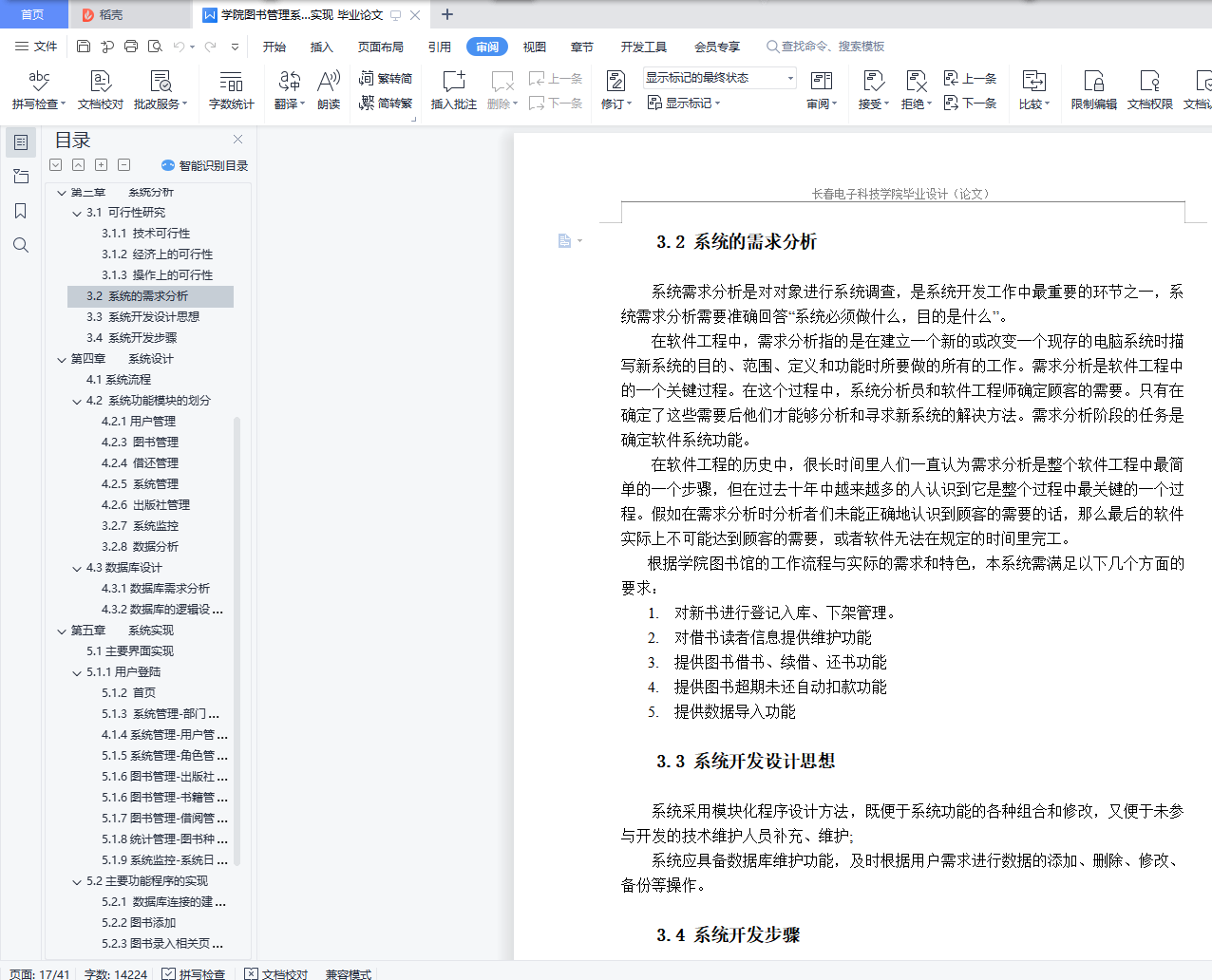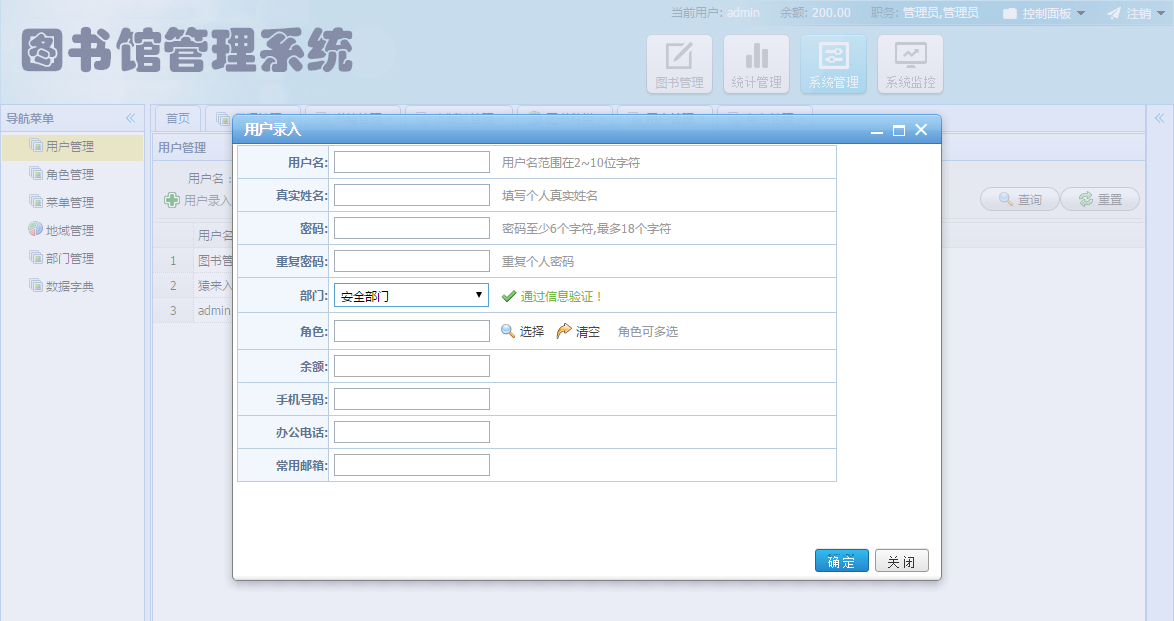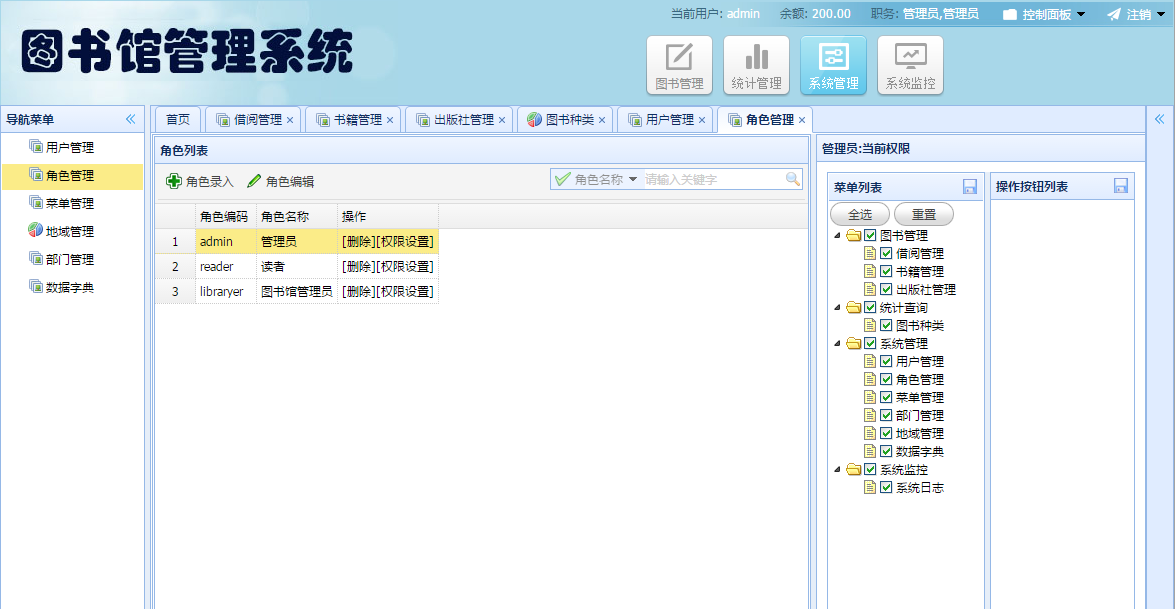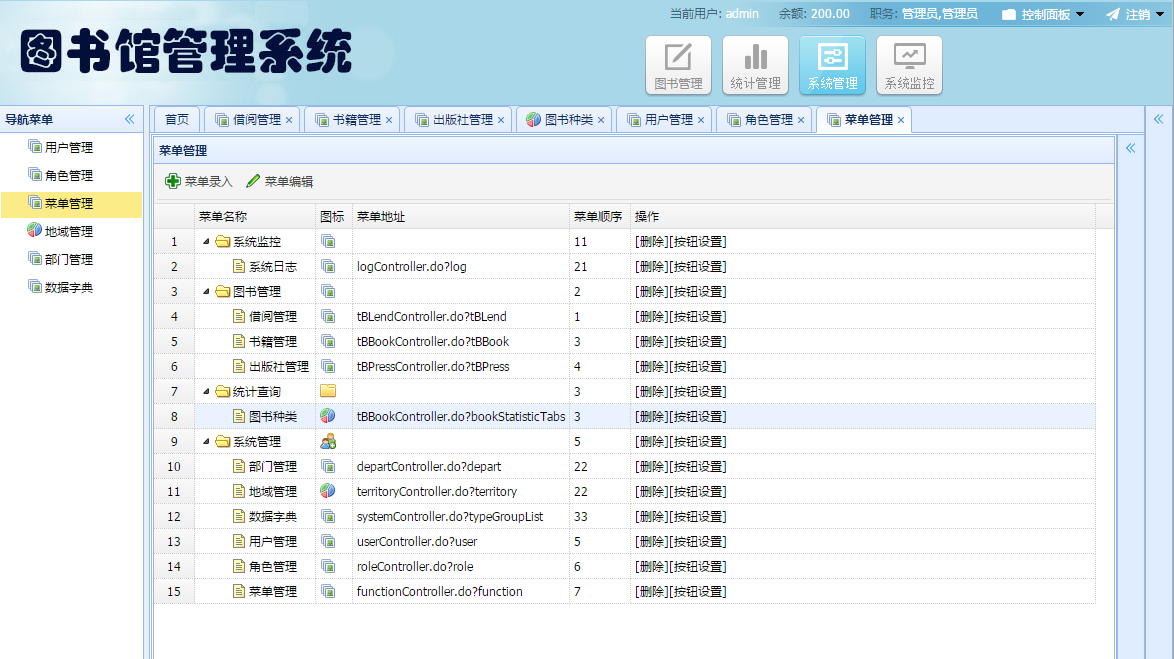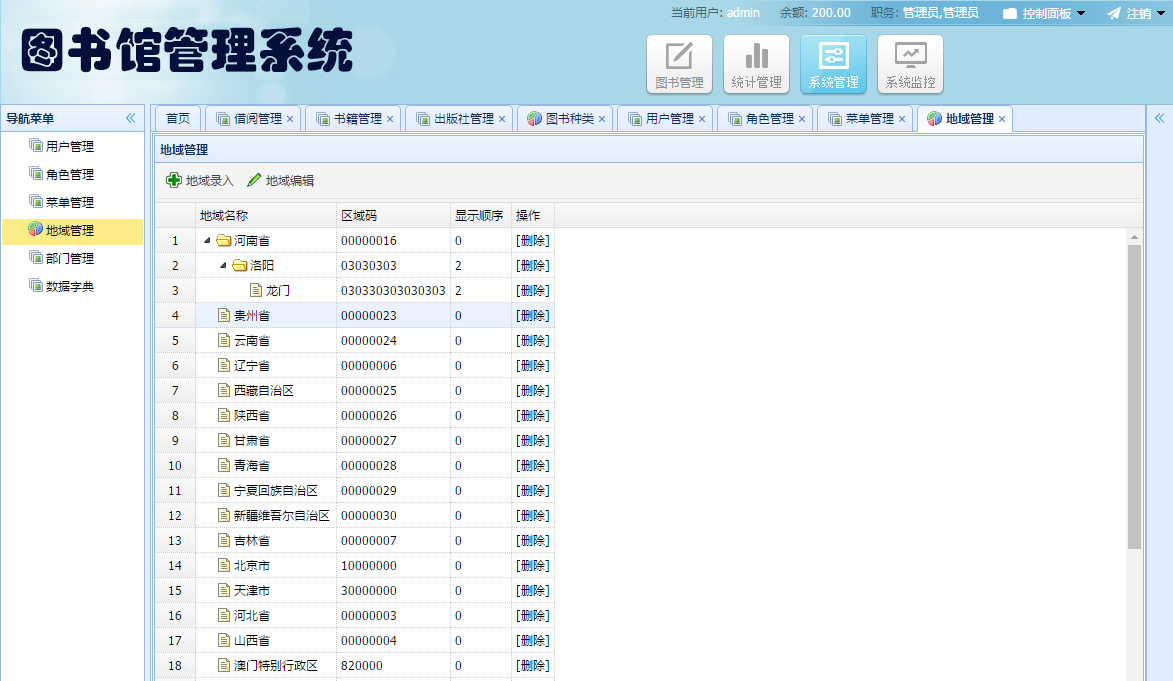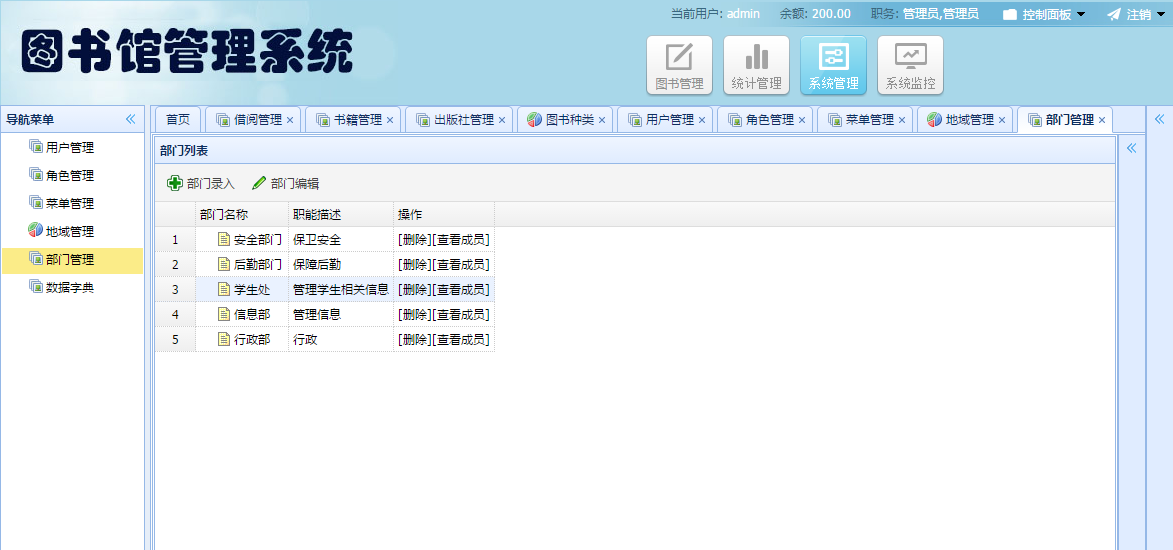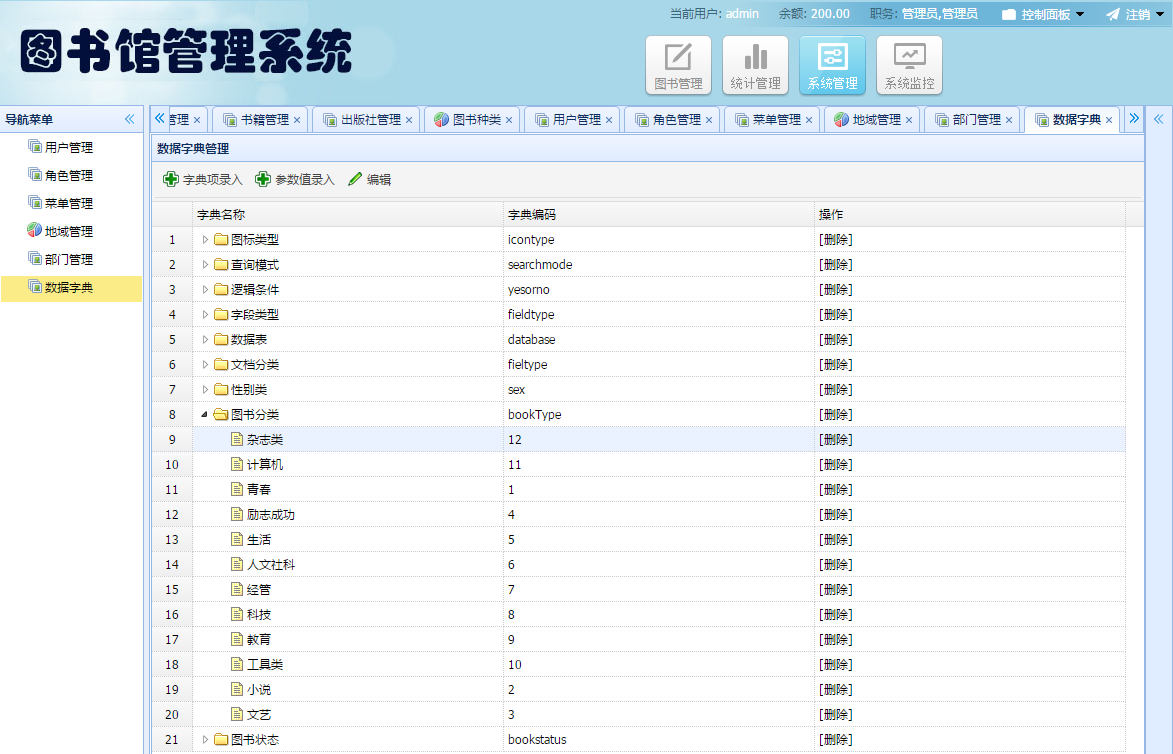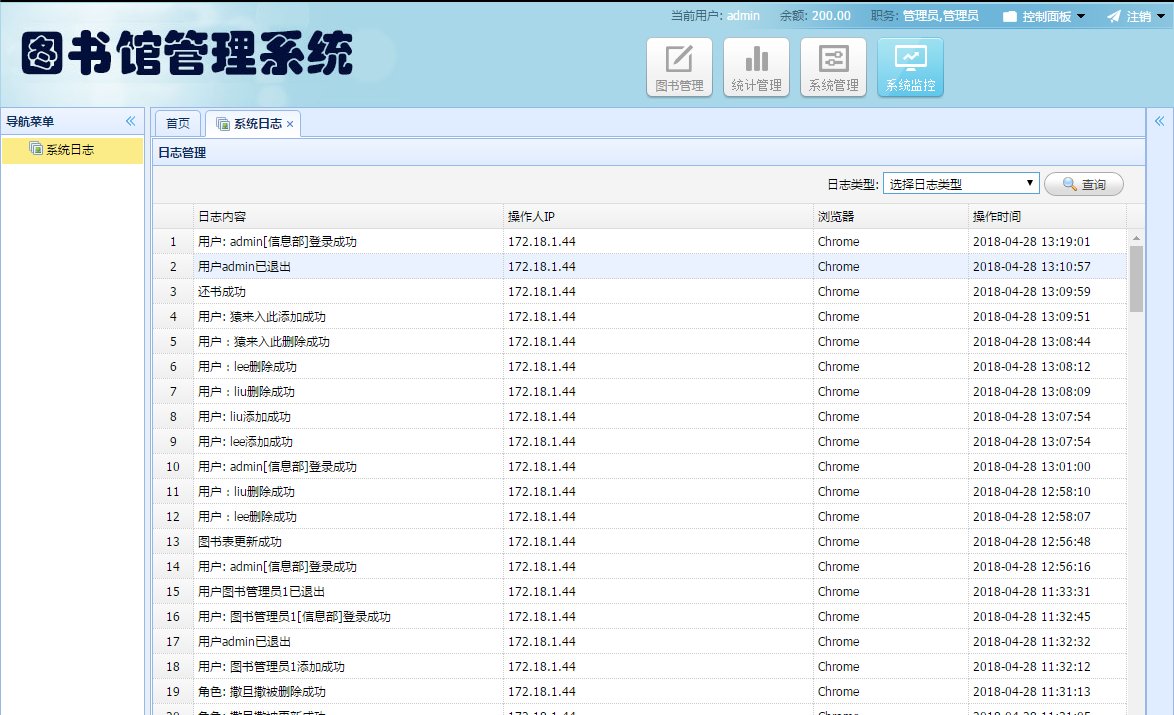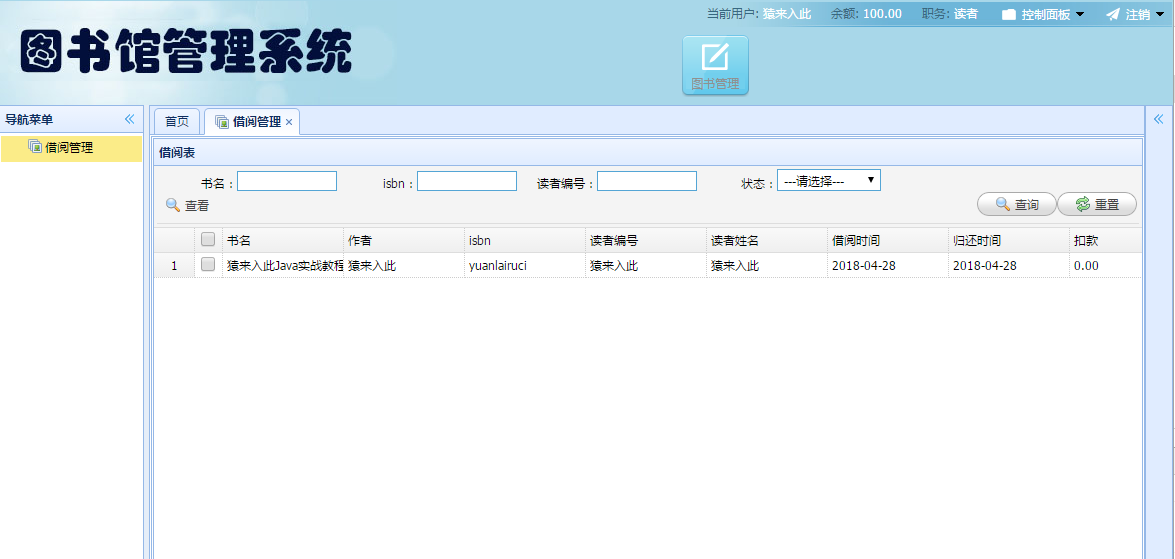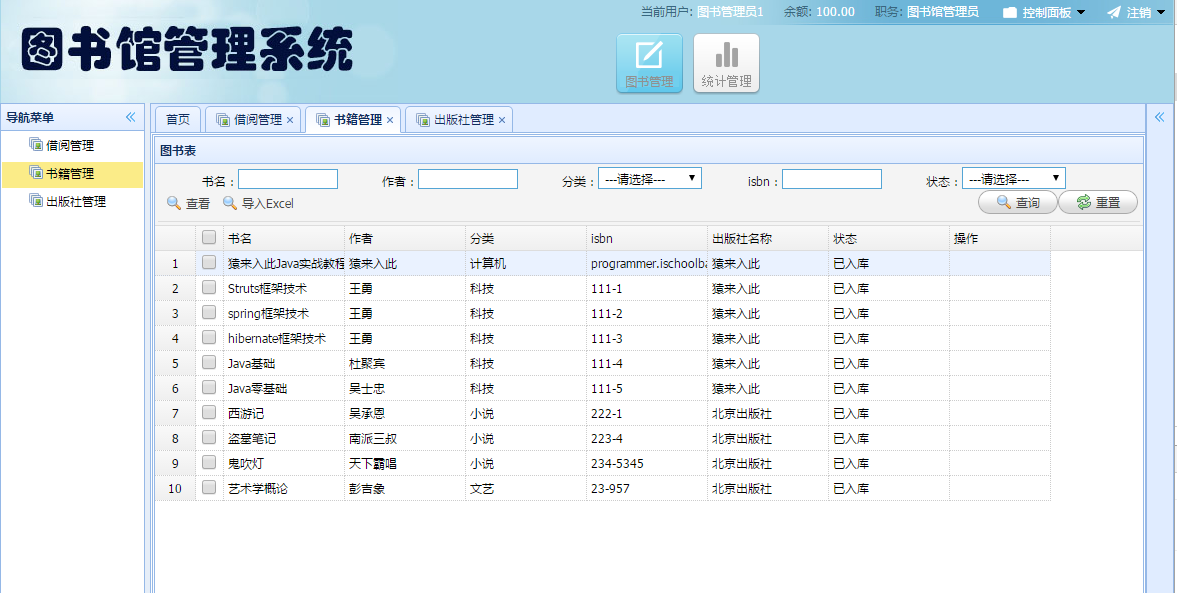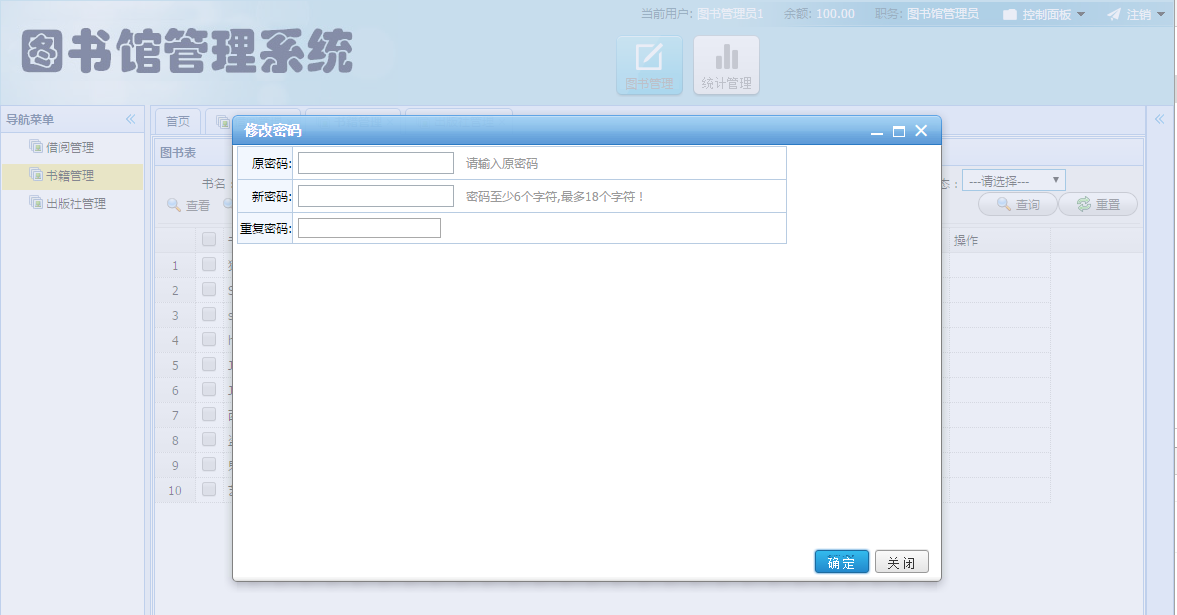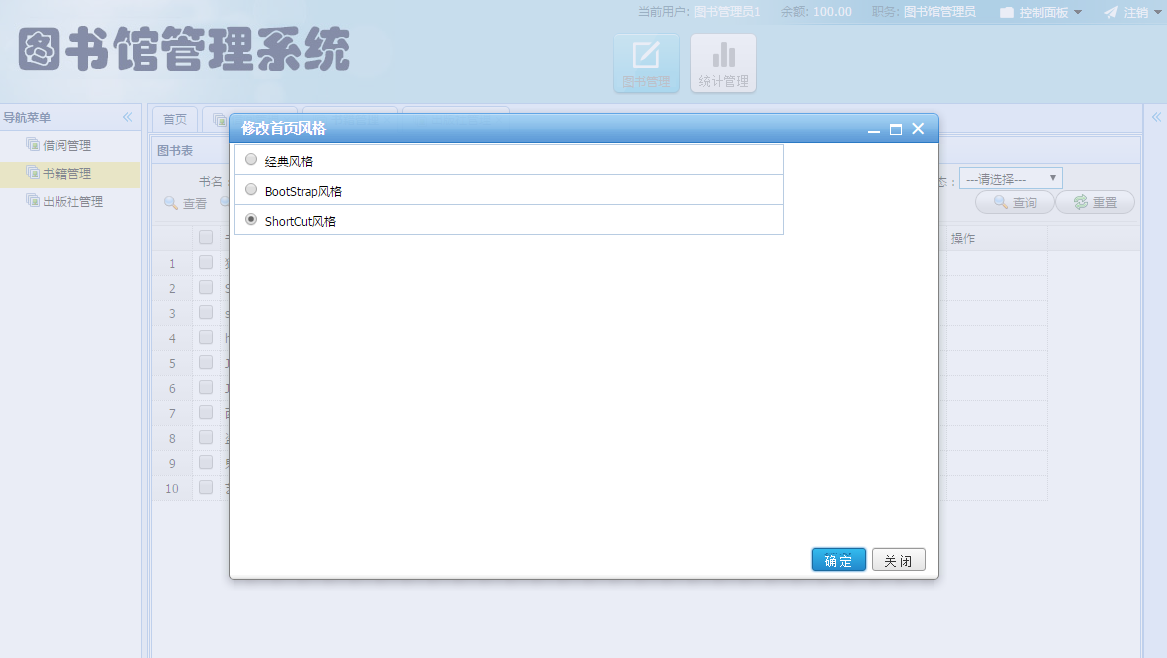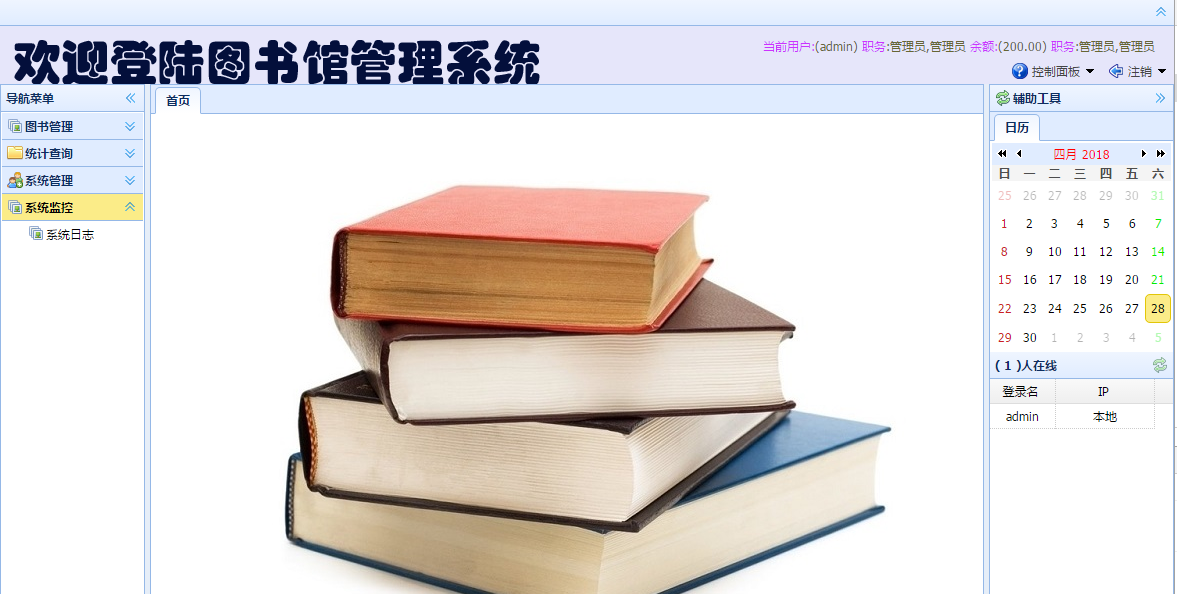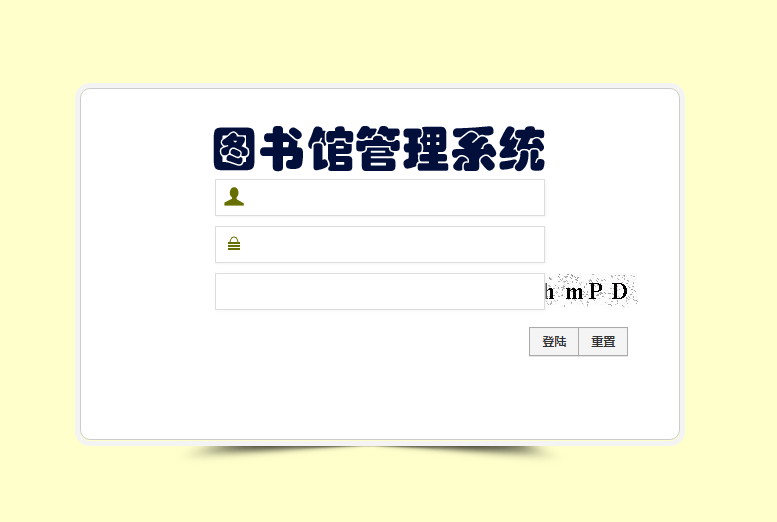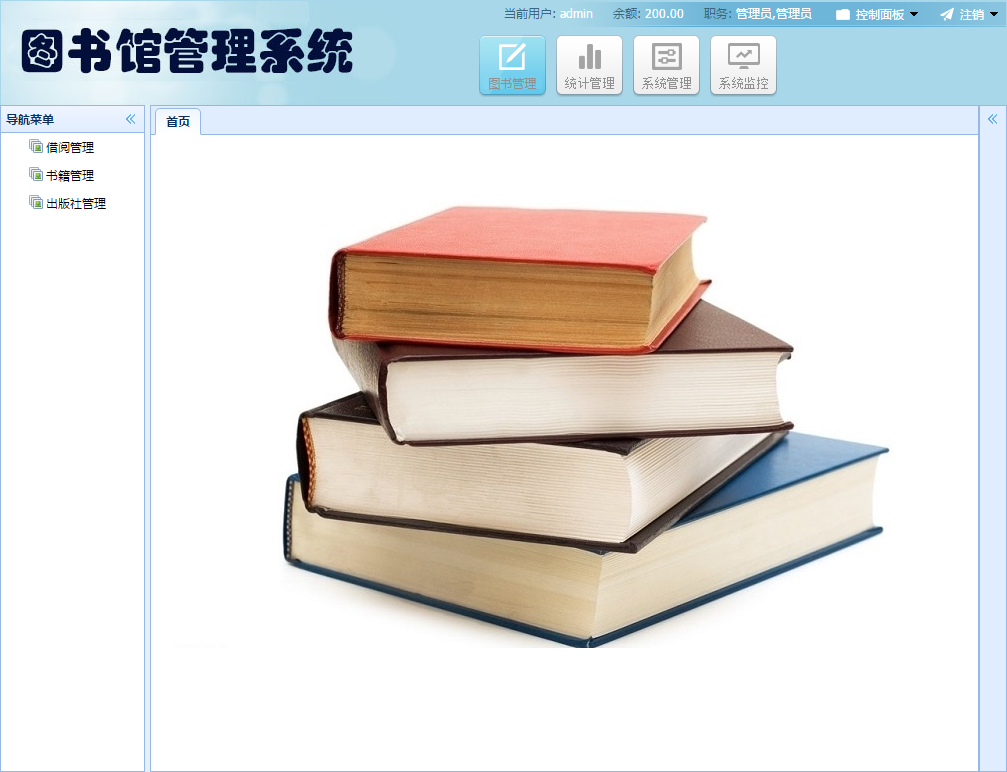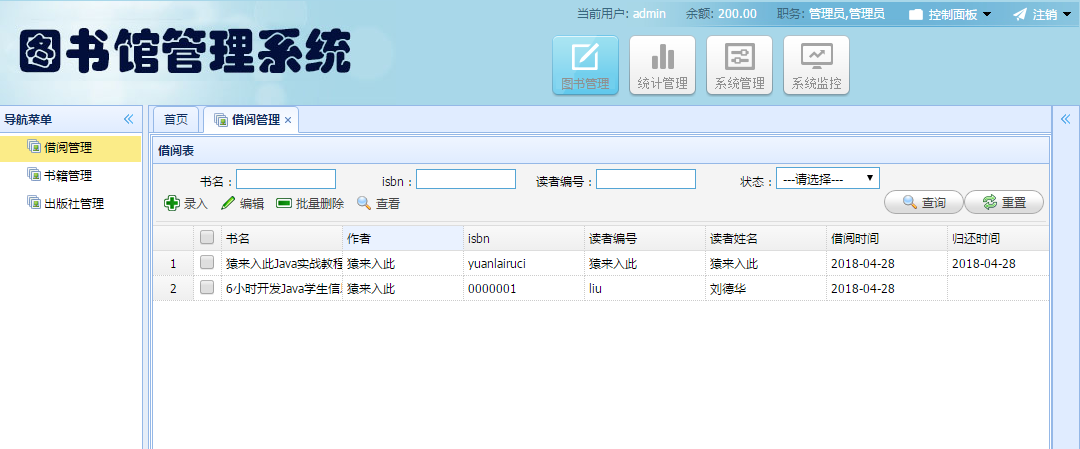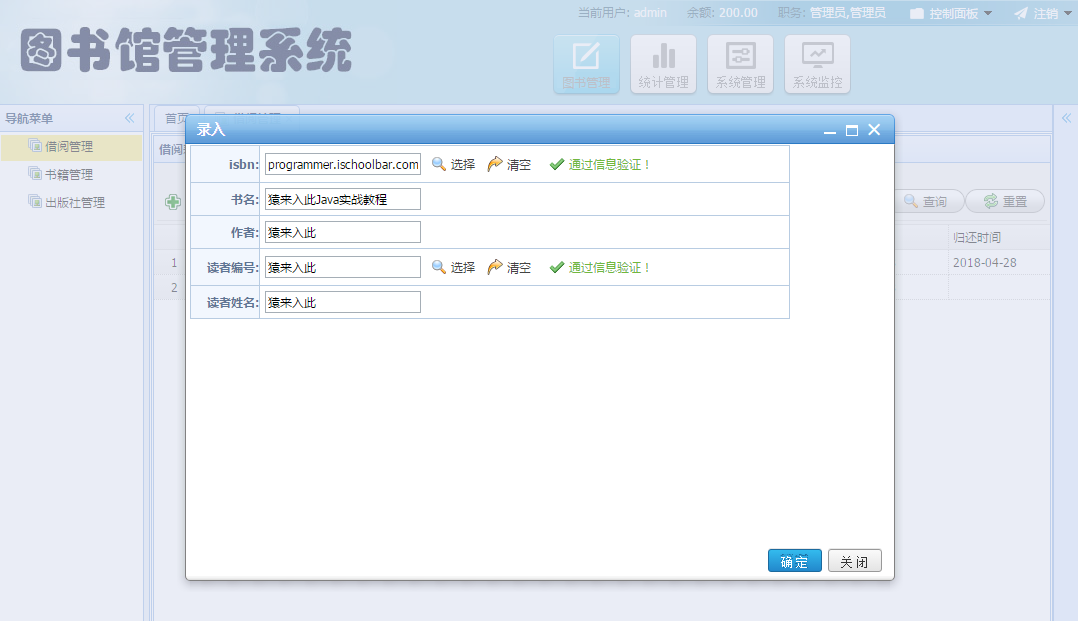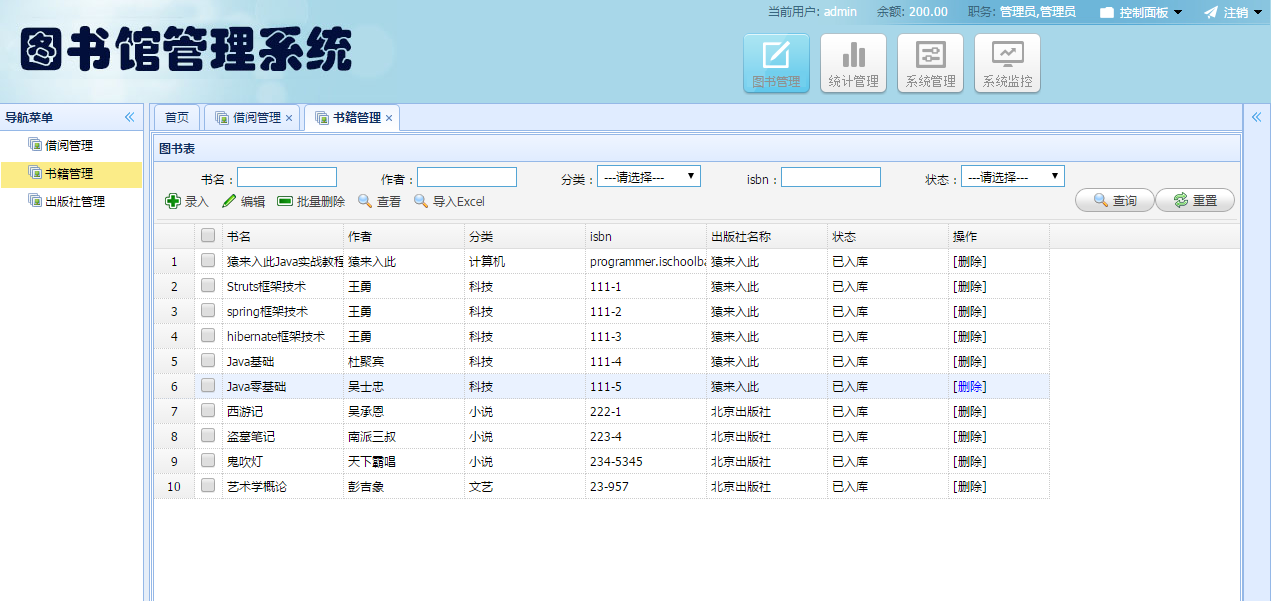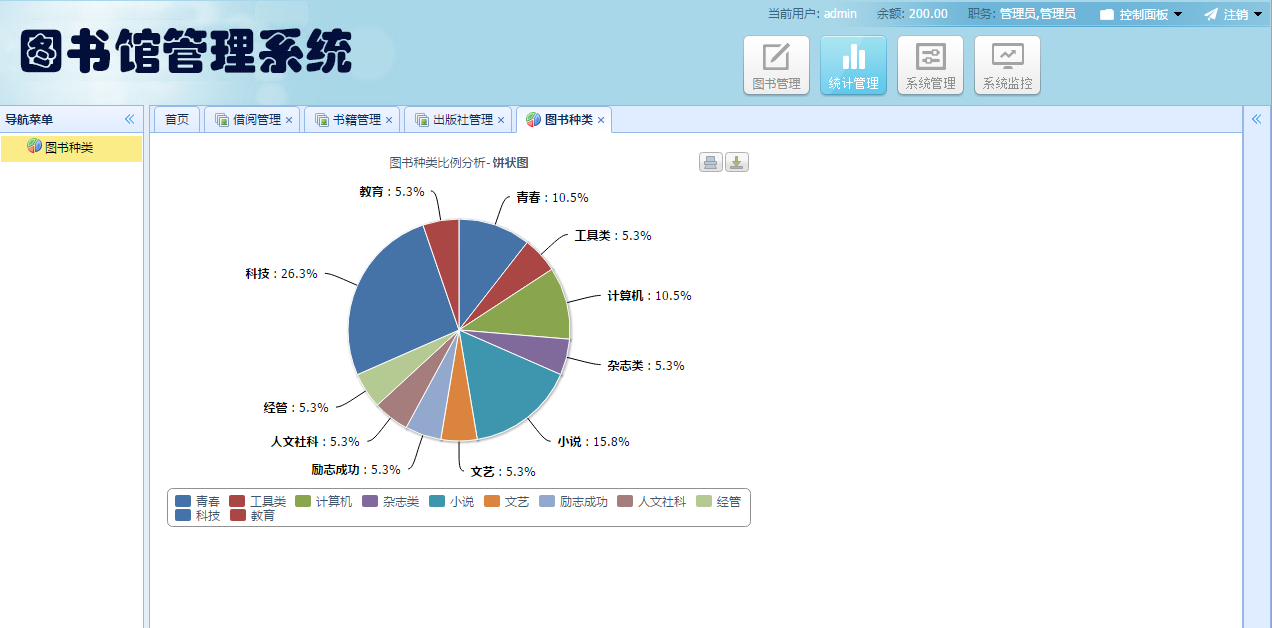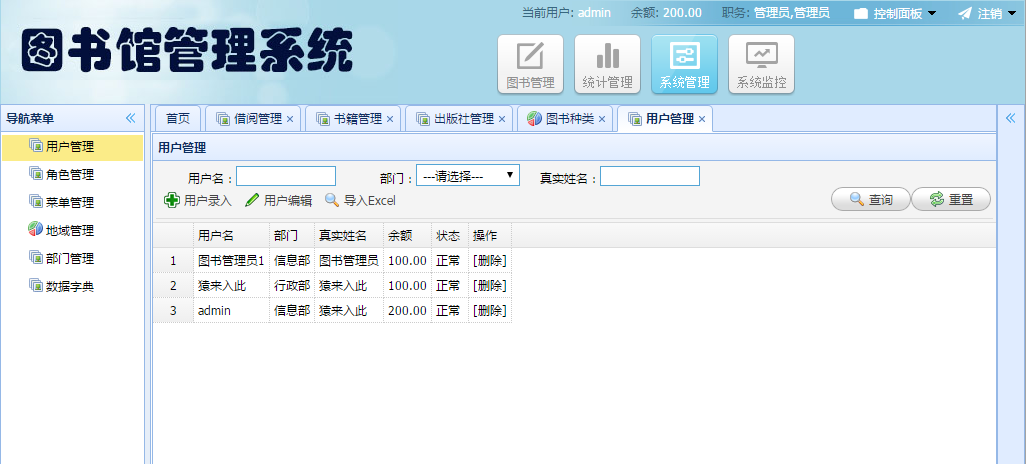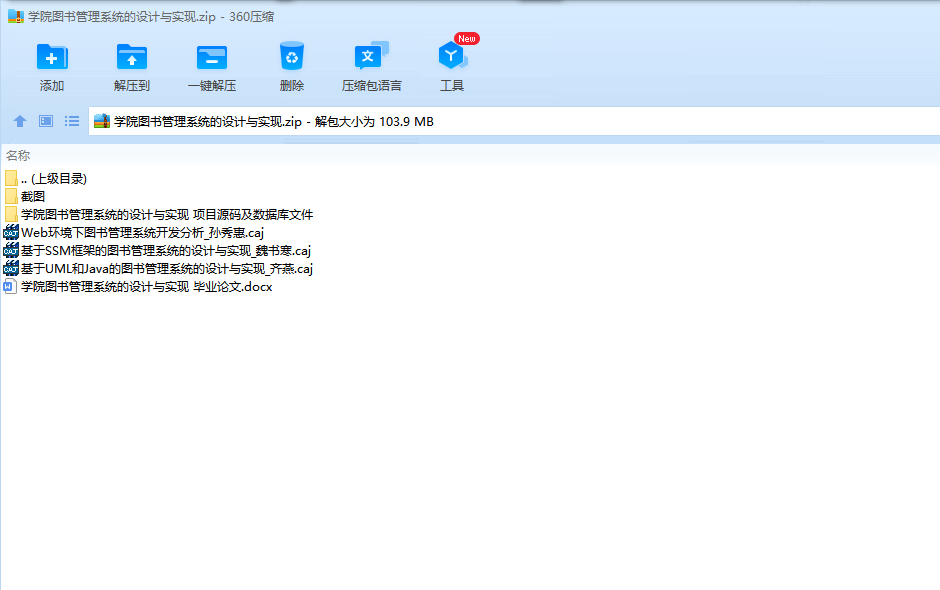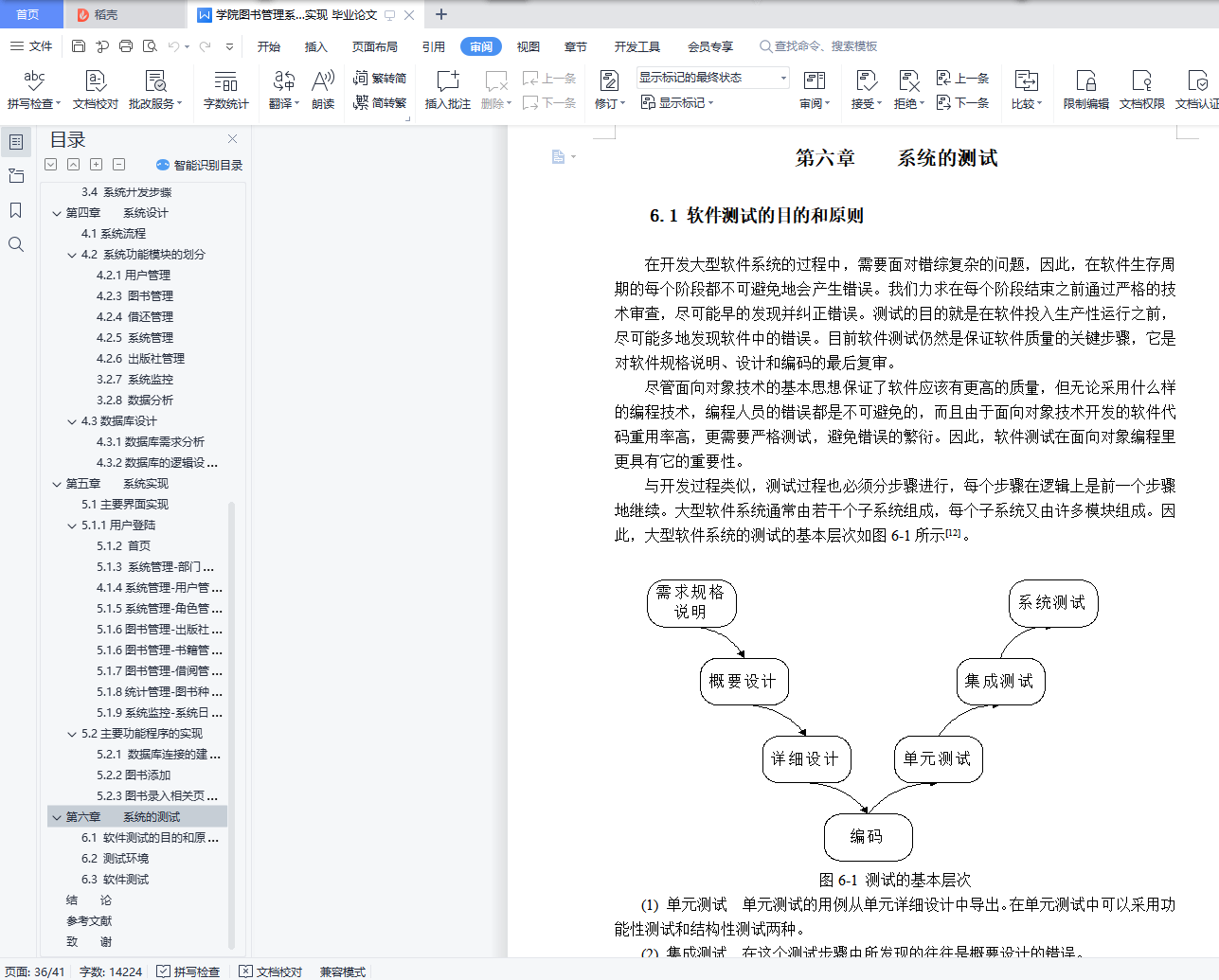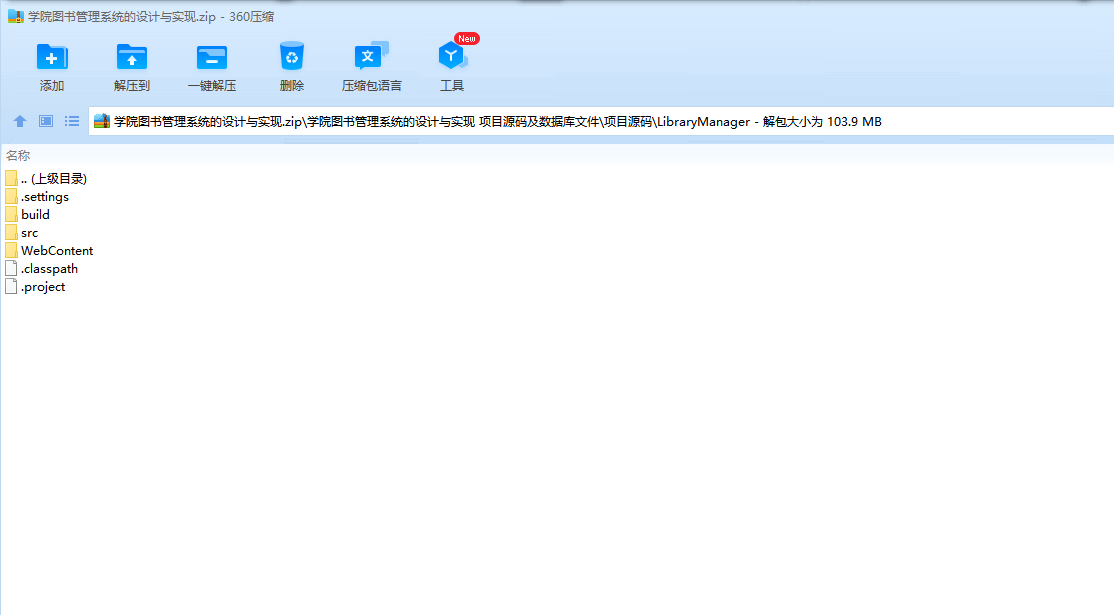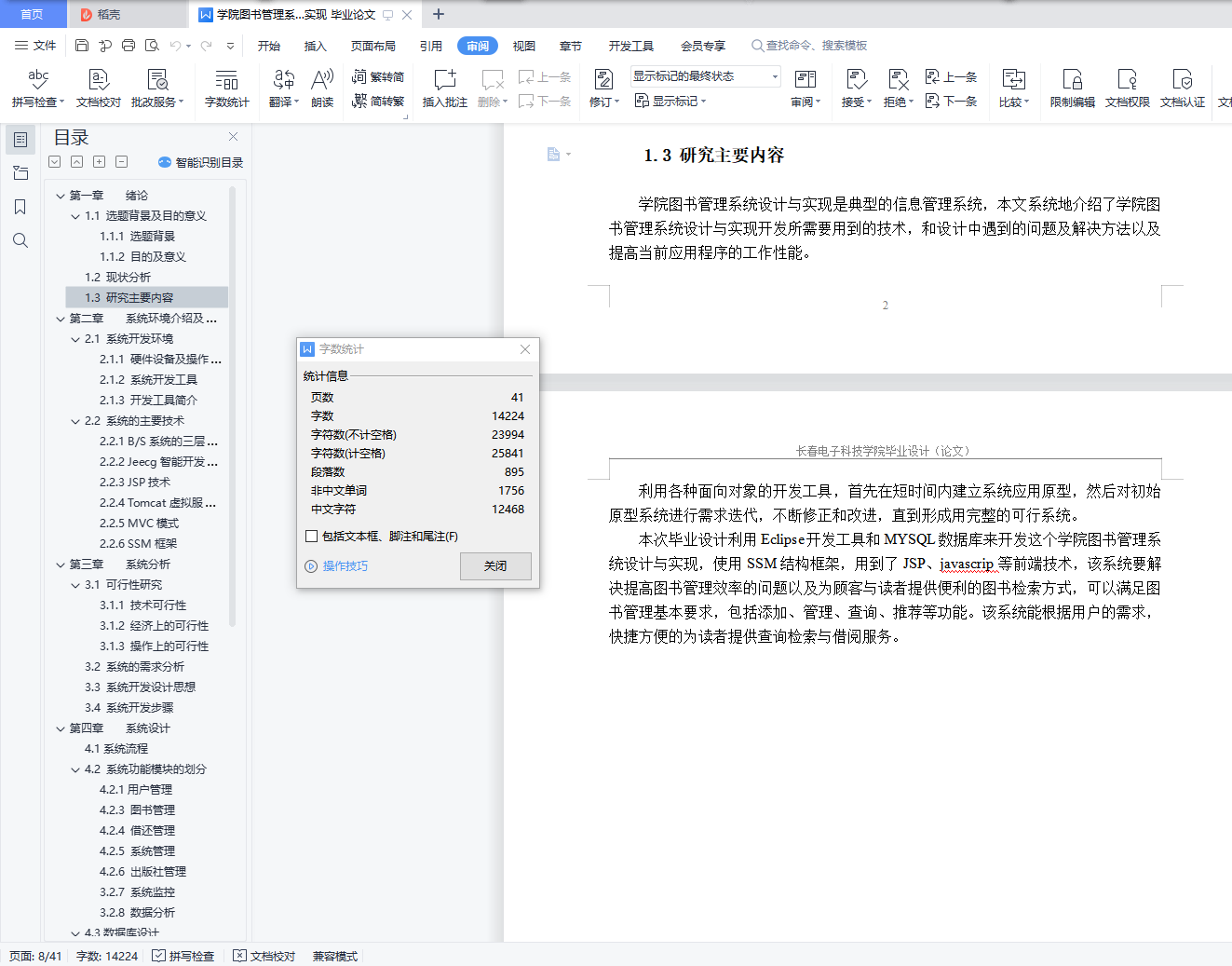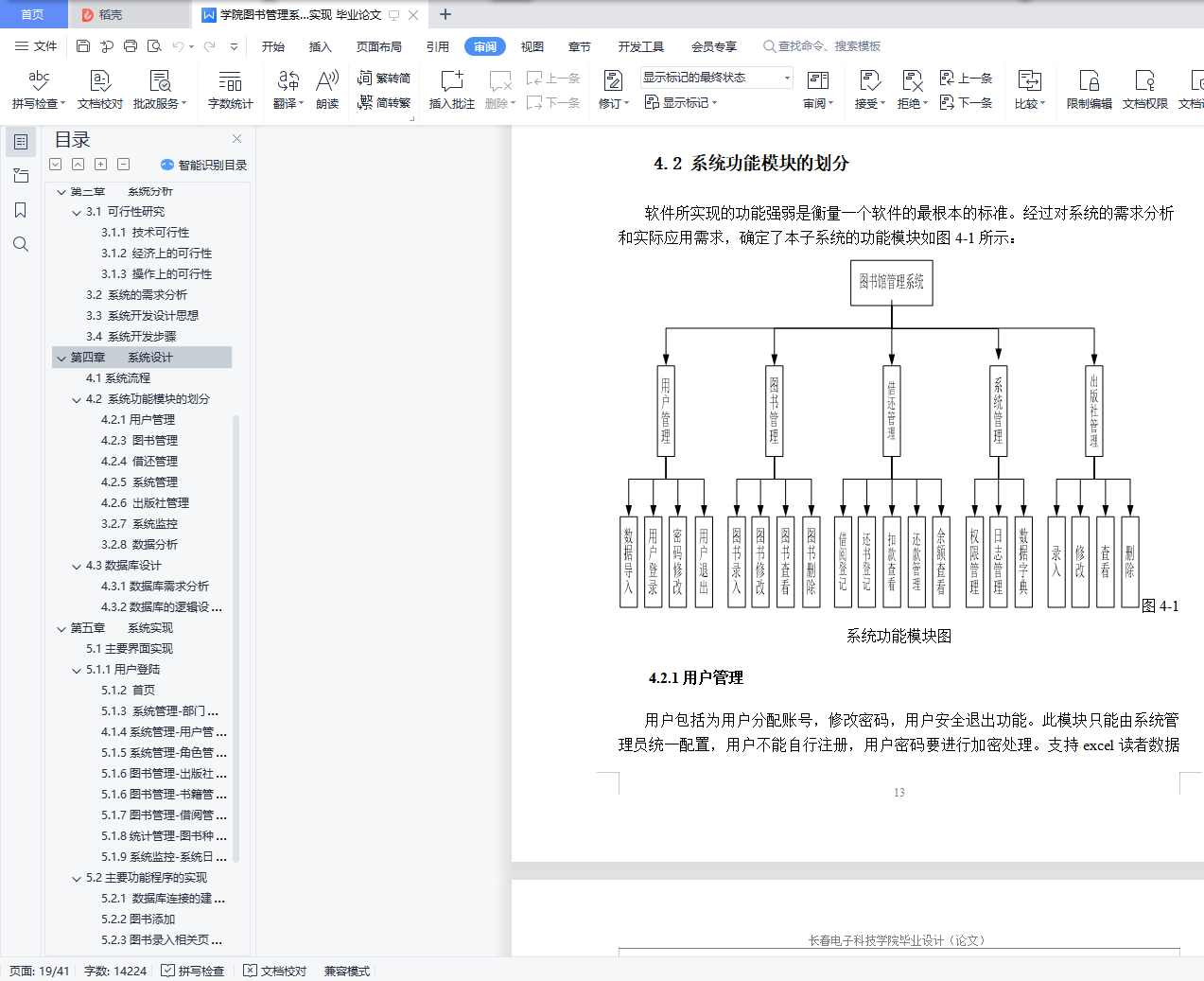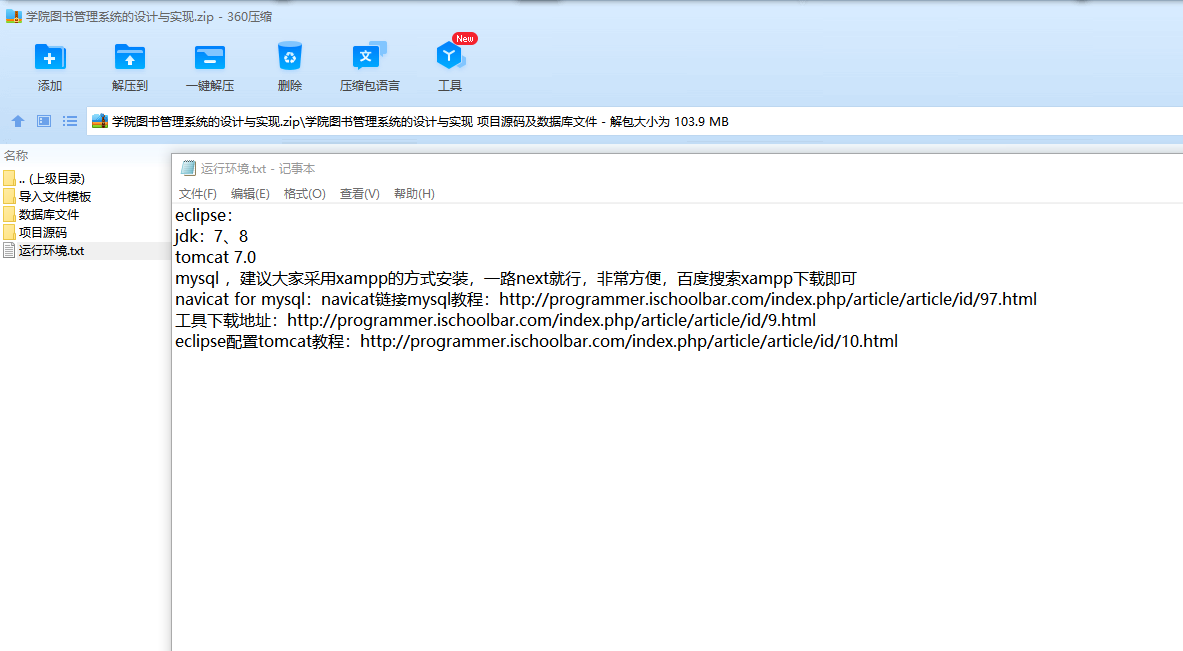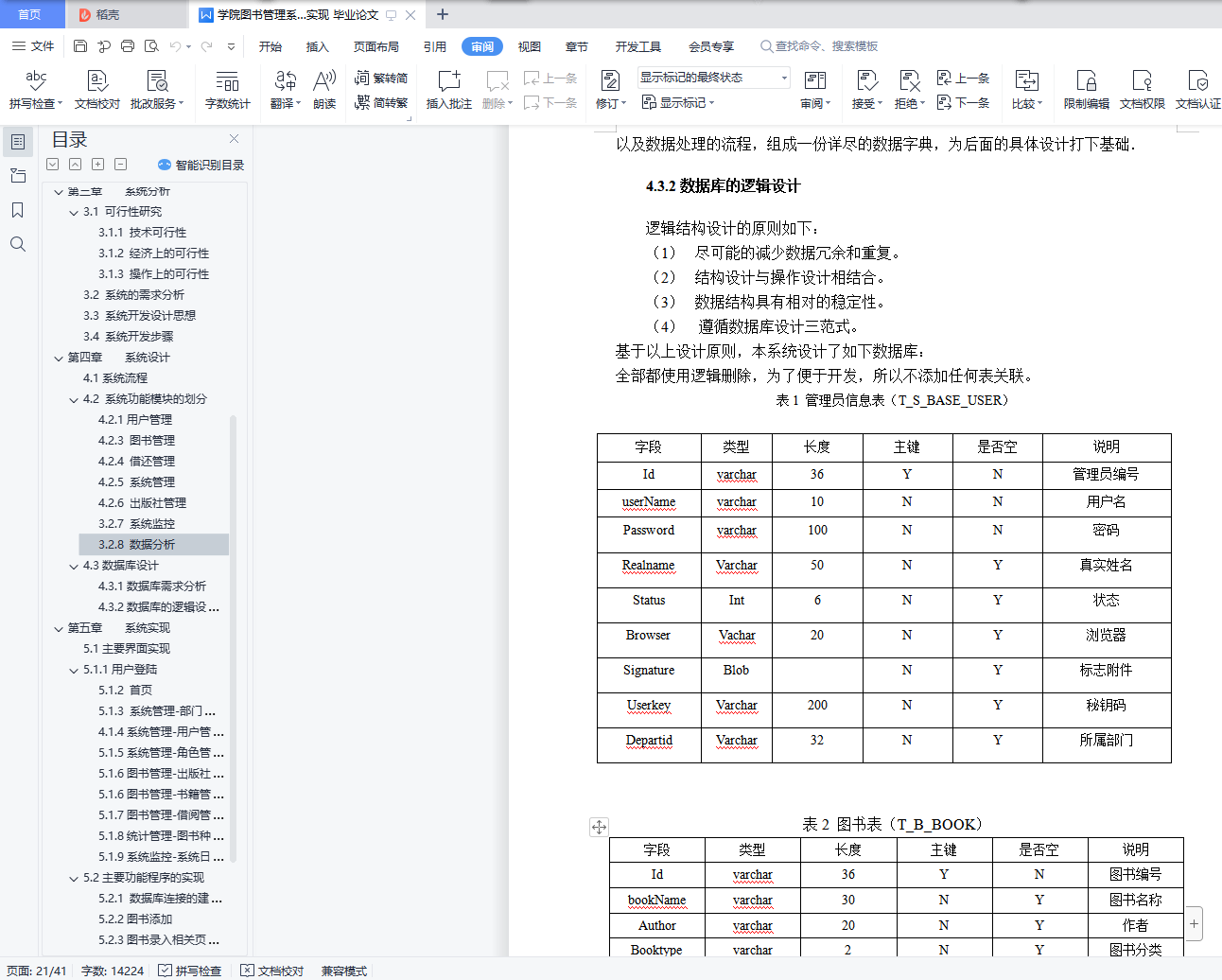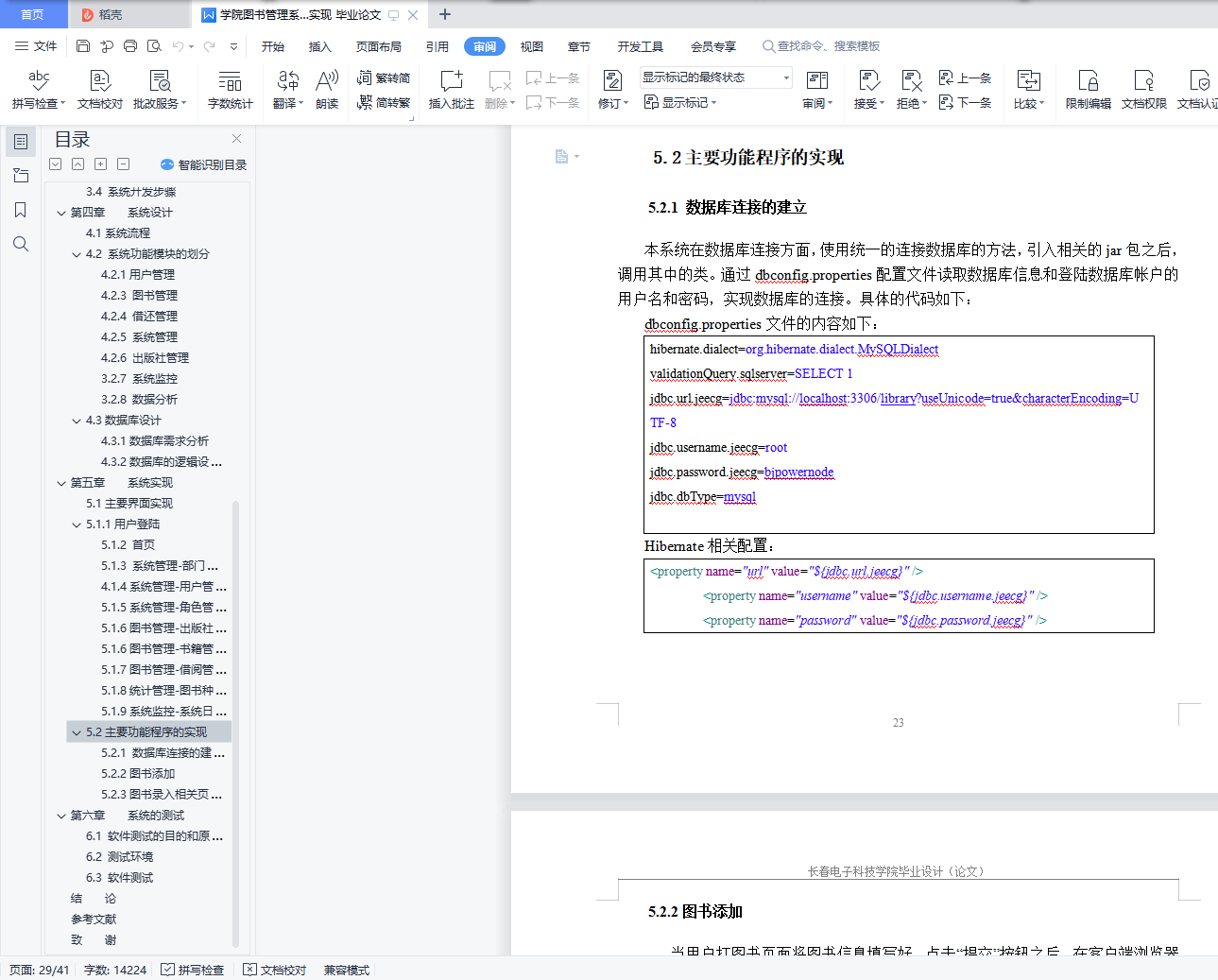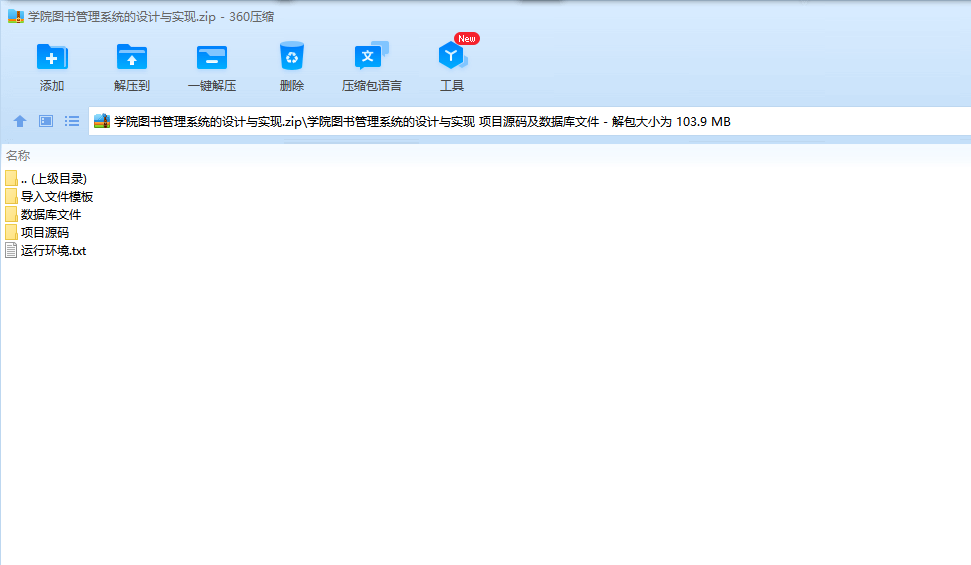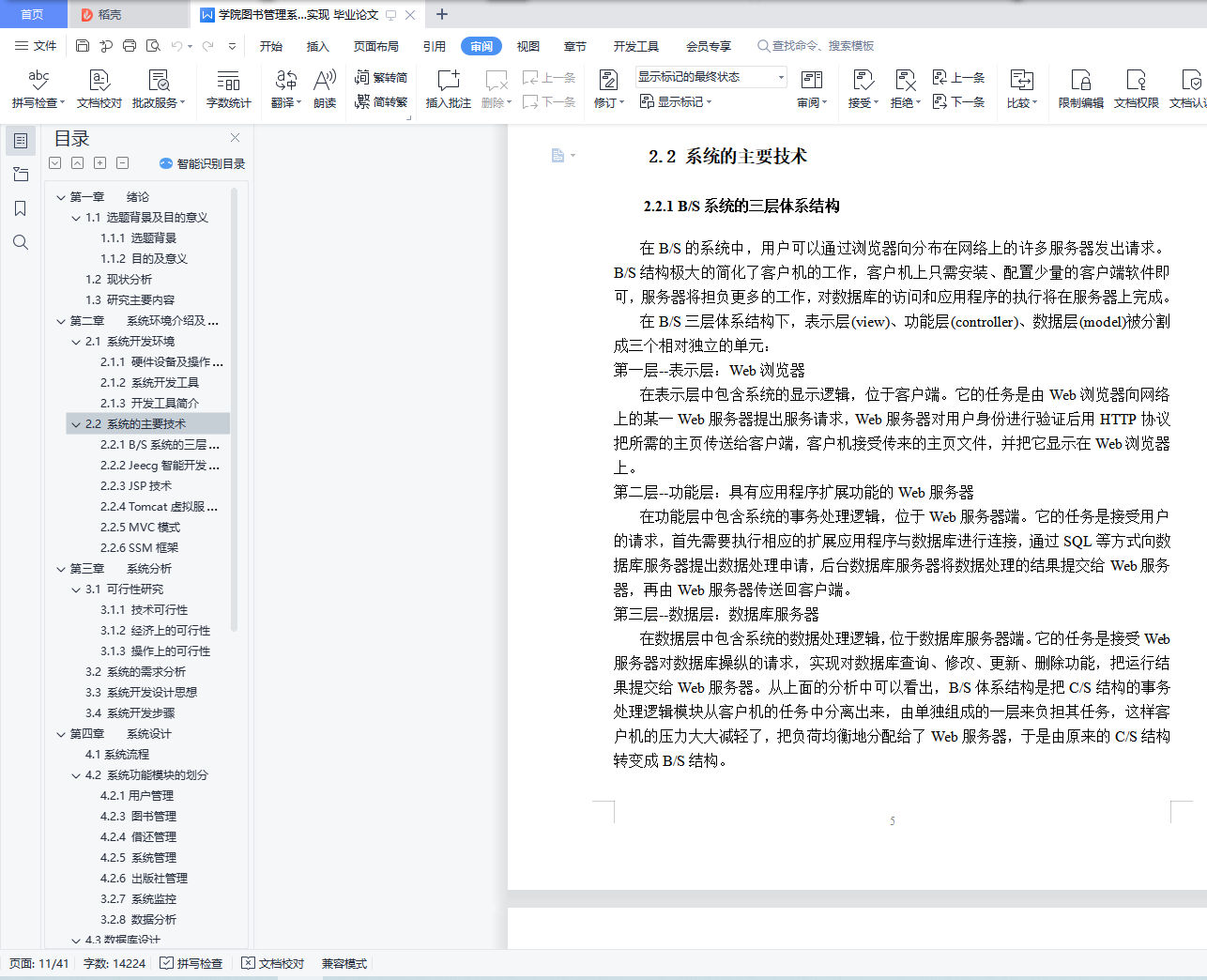摘 要
随着高职院的扩招,图书馆的规模和收藏也在扩大.图书管理系统的使用可以提高图书管理的效率,减少人工工作量和管理成本,节省时间和精力,使管理体系更加规范,科学的功能设置,大大提高了图书馆工作效率。
图书管理系统是为了解决图书的微机管理,实现图书管理从手工操作到微机操作而开发出的一套适合学校管理特点的系统。该系统实现了图书从购进到实际流通,读者从查书到还书的一系列过程的可视化管理。本文主要针对图书馆图书管理系统的设计与实现进行分析,结合当前图书馆图书管理系统设计现状为根据,积极从图书馆图书管理需求,系统总体设计,系统具体设计等方面进行深入研究与探索,主要研究目的在于进一步推动校内图书管理系统设计的实现,从而使图书管理的水平得到有效的提高。
本设计综合应用了JavaWeb技术的特点,同时结合Java开发语言和MySQL数据库技术,实现学院图书馆管理系统。
关键词:图书管理;管理系统;Java;Web;SSM
Abstract
With the expansion of higher vocational colleges, the scale and collection of libraries are also expanding. The use of library management system can improve the efficiency of book management, reduce labor workload and management cost, save time and energy, make the management system more standardized, scientific function setting, and greatly improve the efficiency of library work.
Book management system is a set of system suitable for school management in order to solve the microcomputer management of books and realize the book management from manual operation to microcomputer operation. The system realizes a series of visual management of books from purchase to actual circulation, and readers from checking books to returning books. This paper mainly analyzes the design and implementation of library book management system, and actively studies and explores the requirements of library book management and the overall design of the system according to the current situation of library book management system design. The main purpose of this study is to further promote the realization of library management system design and improve the level of library management.
This design comprehensively applies the characteristics of JavaWeb technology, and combines Java development language and MySQL database technology to realize the library management system of the college.
Keywords: book management; management system; Java;Web;SSM
目 录
第一章 绪论
1.1 选题背景及目的意义
1.1.1 选题背景
1.1.2 目的及意义
1.2 现状分析
1.3 研究主要内容
第二章 系统环境介绍及主要技术介绍
2.1 系统开发环境
2.1.1 硬件设备及操作系统
2.1.2 系统开发工具
2.1.3 开发工具简介
2.2 系统的主要技术
2.2.1 B/S系统的三层体系结构
2.2.2 Jeecg智能开发平台
2.2.3 JSP技术
2.2.4 Tomcat虚拟服务器
2.2.5 MVC模式
2.2.6 SSM框架
第三章 系统分析
3.1 可行性研究
3.1.1 技术可行性
3.1.2 经济上的可行性
3.1.3 操作上的可行性
3.2 系统的需求分析
3.3 系统开发设计思想
3.4 系统开发步骤
第四章 系统设计
4.1系统流程
4.2 系统功能模块的划分
4.2.1用户管理
4.2.3 图书管理
4.2.4 借还管理
4.2.5 系统管理
4.2.6 出版社管理
3.2.7 系统监控
3.2.8 数据分析
4.3数据库设计
4.3.1数据库需求分析
4.3.2数据库的逻辑设计
第五章 系统实现
5.1主要界面实现
5.1.1用户登陆
5.1.2 首页
5.1.3 系统管理-部门管理
4.1.4系统管理-用户管理
5.1.5系统管理-角色管理
5.1.6图书管理-出版社管理
5.1.6图书管理-书籍管理
5.1.7图书管理-借阅管理
5.1.8统计管理-图书种类
5.1.9系统监控-系统日志
5.2主要功能程序的实现
5.2.1 数据库连接的建立
5.2.2图书添加
5.2.3图书录入相关页面
第六章 系统的测试
6.1 软件测试的目的和原则
6.2 测试环境
6.3 软件测试
结 论
参考文献
致 谢
